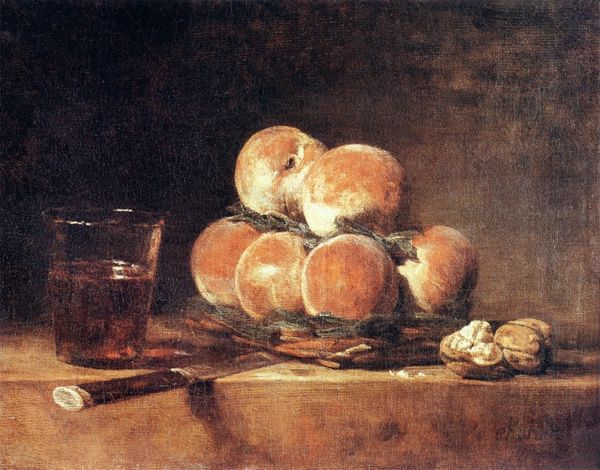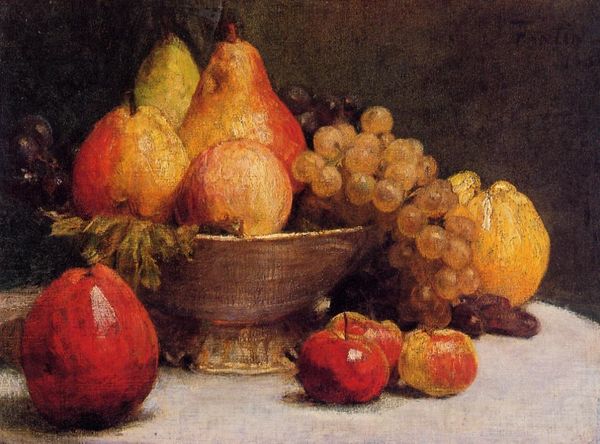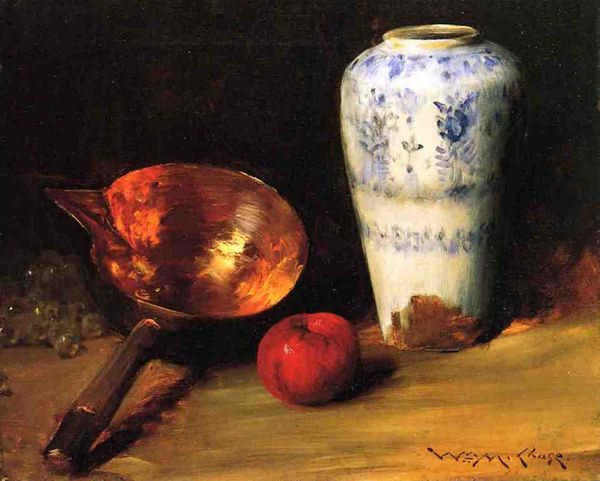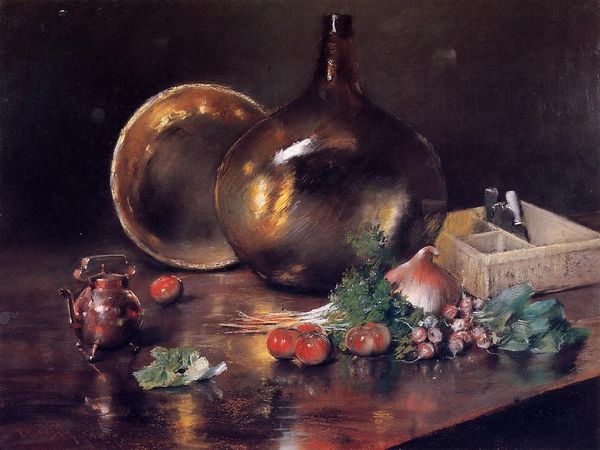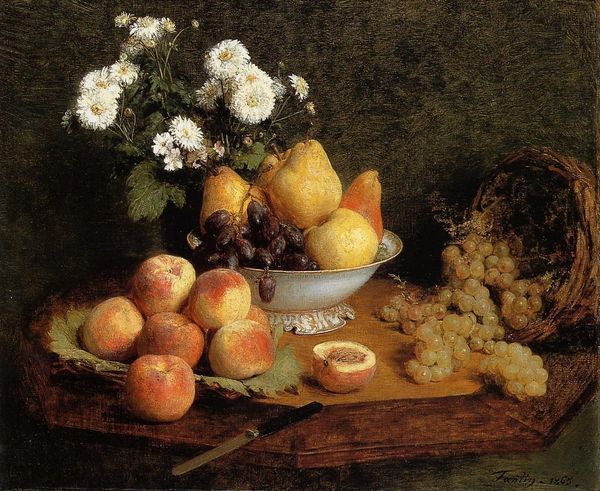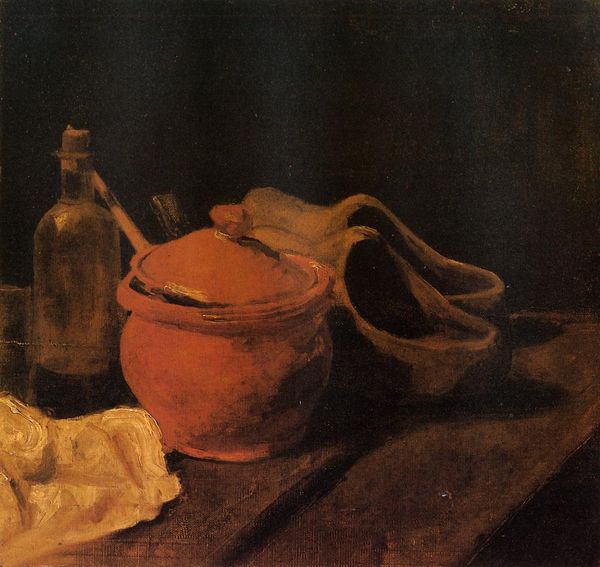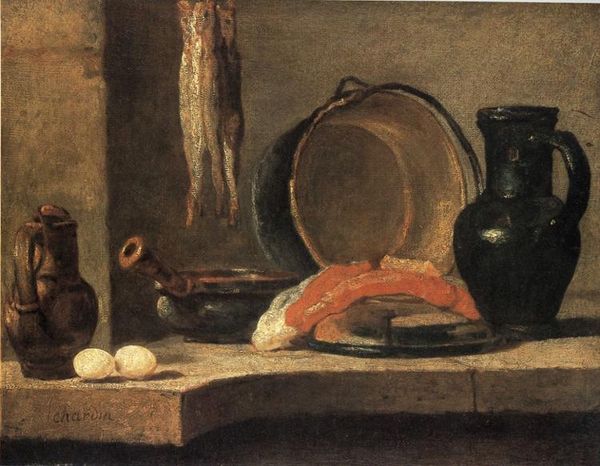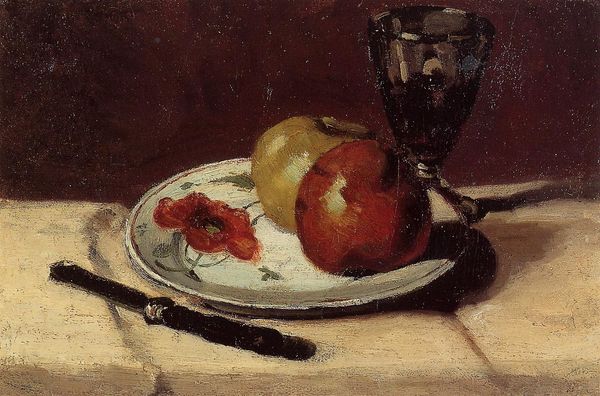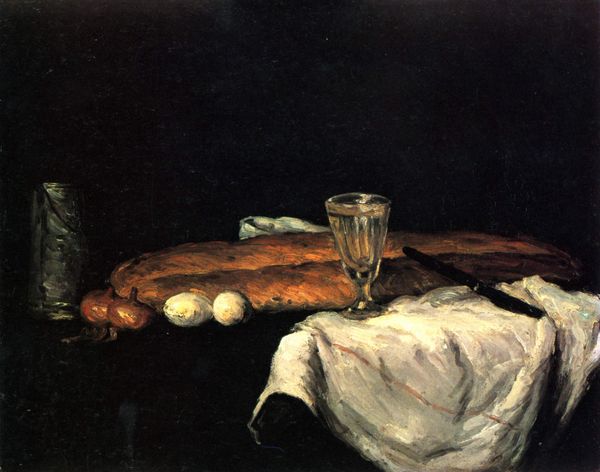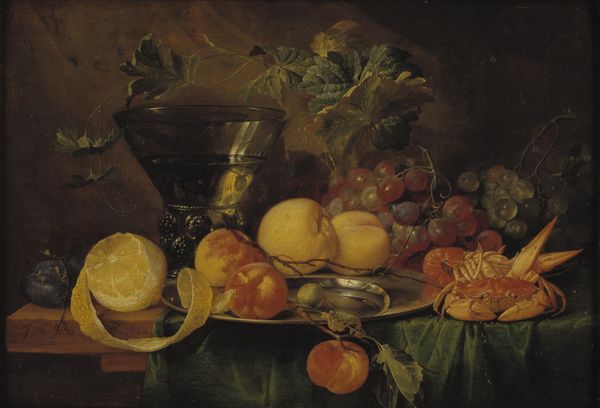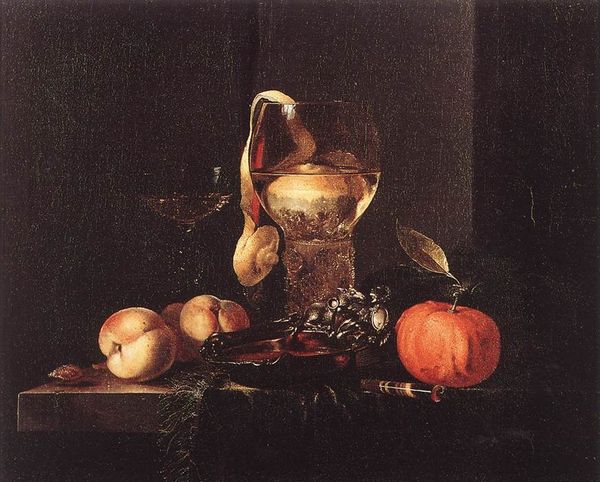
oil-paint, impasto
#
still-life
#
still-life-photography
#
baroque
#
oil-paint
#
oil painting
#
impasto
#
genre-painting
Dimensions: 71 x 98 cm
Copyright: Public domain
Editor: So, this is "Still Life with Jar of Olives," painted in 1760 by Jean-Baptiste-Simeon Chardin. It's an oil on canvas, currently hanging in the Louvre. I'm struck by how simple it seems at first, but the arrangement of objects is really deliberate. What elements jump out at you? Curator: Observe how Chardin meticulously models light and texture. Consider the interplay between the matte surface of the bread and the reflective surfaces of the glass. Notice how these objects are not simply represented but transformed by the act of painting. This transformation involves an intricate system of balanced forms. Do you observe how Chardin uses these relationships to emphasize horizontal and vertical axes? Editor: I do now. It's subtle but effective. The placement feels very intentional, creating a sense of balance. How would you describe Chardin's use of color? Curator: Chardin employed a restricted palette, with emphasis on muted earth tones and grays to unify the objects and intensify the painting's atmosphere. Consider, as well, how the interplay between colors enhances the composition and underscores its underlying formal order. Do the muted earth tones offer some perspective into Baroque aesthetics? Editor: I think it helps ground the piece. I see how Chardin masterfully uses light and shadow to emphasize these items in an artistic context. I can understand Baroque aesthetics, to an extent, in it, yes. It’s almost like the ordinariness adds to the artwork’s beauty, making the familiar look exceptional. Curator: Precisely. And through the composition, arrangement, colors, shapes, values, texture, space, and line, Still Life as a whole creates its identity as a subject. Editor: That's a fantastic breakdown! Thank you; I feel I better understand how Chardin's formal choices create such a powerful effect. Curator: A rigorous focus on an artwork's internal structural features enables our deeper perception.
Comments
No comments
Be the first to comment and join the conversation on the ultimate creative platform.

